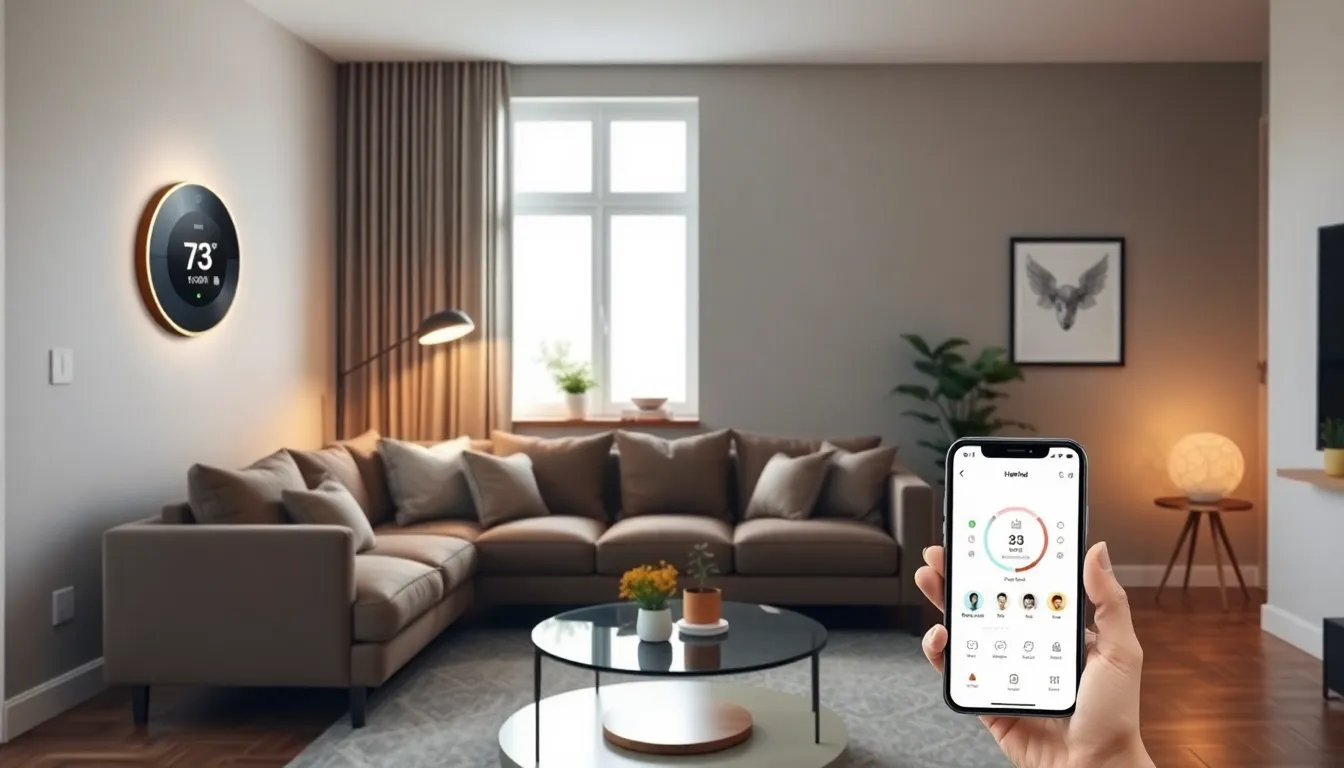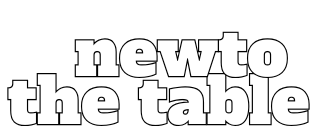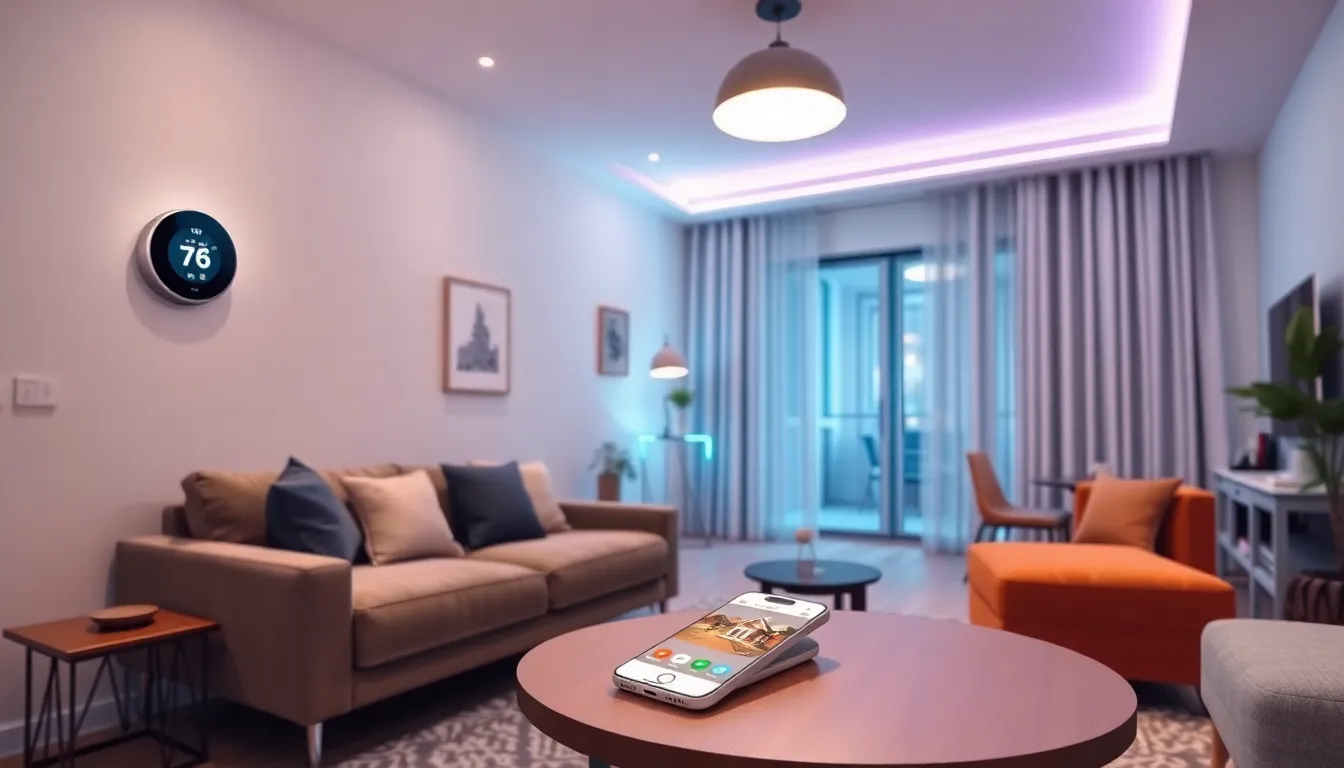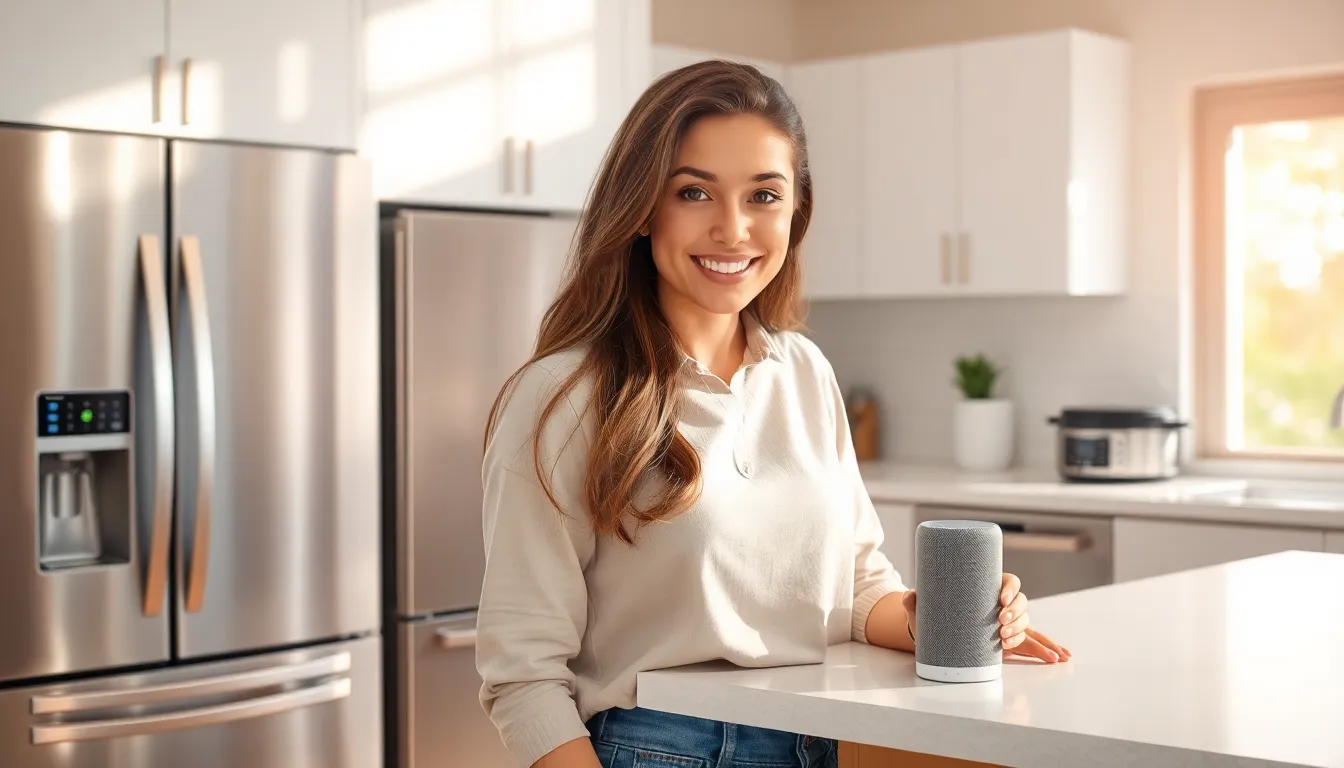Imagine walking into your home and having it greet you like a long-lost friend. That’s the magic of smart home IoT technology. With a few taps on your smartphone or a simple voice command, your lights dim, your coffee brews, and your thermostat adjusts to the perfect temperature. It’s like having a personal assistant who never asks for a raise!
Table of Contents
ToggleWhat Is Smart Home IoT?
Smart home IoT refers to a network of connected devices that enhance living spaces through automation and control. Consumers gain the ability to manage lighting, heating, and appliances using smartphones or voice commands. This technology creates a seamless environment that promotes convenience and energy efficiency.
Devices like smart thermostats, security cameras, and lighting systems contribute significantly to the smart home experience. Smart thermostats learn user preferences and adjust temperatures automatically, saving energy. Security cameras provide real-time monitoring through mobile apps, ensuring safety and peace of mind. Smart lighting systems allow users to customize brightness levels and colors, adapting to different moods and activities.
Integration of these devices is crucial. They connect through protocols like Wi-Fi, Zigbee, and Z-Wave, enabling easy communication between devices. As a result, homeowners can create tailored routines that align with their lifestyles. For example, setting a “good morning” routine might involve adjusting the thermostat, turning on lights, and brewing coffee simultaneously.
Data privacy and security remain essential considerations. Manufacturers implement measures like encryption and secure user authentication to protect personal information. Regular software updates also help mitigate vulnerabilities, reinforcing user confidence in smart home technology.
Adoption rates for smart home IoT devices have been on the rise. According to industry research, the global smart home market is expected to reach over $174 billion by 2025. This growth demonstrates increasing consumer interest in smart solutions that simplify daily living.
Benefits of Smart Home IoT

Smart home IoT technology provides significant benefits that enhance everyday living. Consumers experience improved daily routines through automation and connectivity.
Enhanced Convenience
Smart home IoT devices deliver unmatched convenience. Homeowners can control lighting and appliances from anywhere using a smartphone app. Voice commands add another easy layer of interaction, allowing users to manage their environment effortlessly. Scheduling routines for heating, cooling, and even coffee brewing streamlines daily tasks, saving precious time. Smart locks enable secure entry without the hassle of traditional keys, enhancing overall accessibility. Devices can also work in tandem; for instance, security cameras can send alerts directly to phones, ensuring that homeowners stay informed no matter where they are.
Improved Energy Efficiency
Smart home IoT enhances energy efficiency significantly. Smart thermostats adjust temperatures automatically based on user preferences and occupancy patterns, promoting energy conservation. Homeowners can track energy usage in real-time, identifying patterns that lead to savings. Furthermore, smart lighting systems enable users to schedule on-off cycles and dimming options, reducing energy waste. Integration with solar panels amplifies these benefits, allowing for a more sustainable energy approach. Industry experts emphasize that adopting smart technologies in households can lead to energy savings of up to 30%, reflecting substantial monthly cost reductions.
Key Components of Smart Home IoT
Smart home IoT comprises essential elements that contribute to a modern and efficient living space.
Smart Devices
Smart devices serve as the backbone of smart home IoT systems. Examples include smart thermostats, which adapt to user preferences, improving energy efficiency. Smart lighting systems allow for customizable settings, enhancing atmosphere and convenience. Smart security cameras offer real-time monitoring, providing peace of mind. Integration of smart locks simplifies home access, making it easier to manage entry points. Each device connects seamlessly, giving homeowners control over various aspects of their environment.
Connectivity Protocols
Connectivity protocols enable communication between smart home devices. Wi-Fi serves as a common protocol, allowing devices to connect directly to the internet. Zigbee and Z-Wave function effectively for low-power devices, facilitating efficient communication at shorter ranges. These protocols ensure devices work in harmony, allowing users to create customized routines. Integration of multiple protocols enhances the flexibility and functionalities of smart home systems, offering a cohesive user experience.
Security Considerations for Smart Home IoT
Security concerns play a significant role in the adoption of smart home IoT technology. Addressing these concerns is vital for protecting users’ personal data and maintaining device integrity.
Data Privacy
Data privacy poses a serious challenge for smart home device users. Information collected from smart devices often includes personal habits and routines. Manufacturers typically implement strong encryption to safeguard this data during transmission. Regular software updates are crucial for closing loopholes that could expose sensitive user information. According to a survey by Pew Research, 81% of Americans feel they have little control over their personal data. Educating consumers about settings that boost privacy can enhance their overall experience and trust in smart home technologies.
Device Vulnerabilities
Device vulnerabilities represent a major risk in smart home environments. Many smart devices exhibit weaknesses that hackers may exploit. Outdated firmware can give intruders easy access to home networks. Researchers discovered that over 50% of IoT devices contain security vulnerabilities. Manufacturers need to prioritize security in device design and build robust authentication measures to prevent unauthorized access. Employing strong, unique passwords and enabling two-factor authentication significantly reduces risks associated with compromised devices. Users should monitor device activity regularly to spot unusual behavior.
Future Trends in Smart Home IoT
The smart home IoT landscape continues to evolve with emerging innovations. Key trends signify increased efficiency and smarter living spaces.
Integration with AI
Integration with artificial intelligence is transforming smart home functionalities. Devices equipped with AI can learn user habits and optimize settings automatically. Smart assistants analyze data to provide personalized suggestions for energy savings and convenience. Machine learning algorithms improve as they gather more data from user interactions, leading to more accurate predictions. The synergy between AI and IoT devices enhances home automation, making smart homes intuitively responsive to individual preferences.
Expanding Ecosystems
Expanding ecosystems mark the next phase in smart home IoT development. Companies collaborate to create interoperable devices that communicate seamlessly across platforms. Popular ecosystems, such as Google Home and Amazon Alexa, partner with various manufacturers to broaden device compatibility. This integration allows users to control multiple devices from a single interface, simplifying the user experience. The expansion drives consumer adoption, as homeowners seek comprehensive solutions that deliver convenience and cohesive functionality in their living spaces.
Smart home IoT technology is reshaping how people interact with their living spaces. By offering convenience and energy efficiency, these systems empower users to create tailored environments that suit their lifestyles. The integration of AI and advanced connectivity protocols enhances the user experience, making homes more responsive and intuitive.
As adoption rates continue to rise, it’s essential for consumers to stay informed about security and privacy measures. With the right precautions in place, smart home IoT can significantly improve daily living while promoting sustainability. Embracing these innovations not only simplifies tasks but also sets the stage for a more connected and efficient future.








